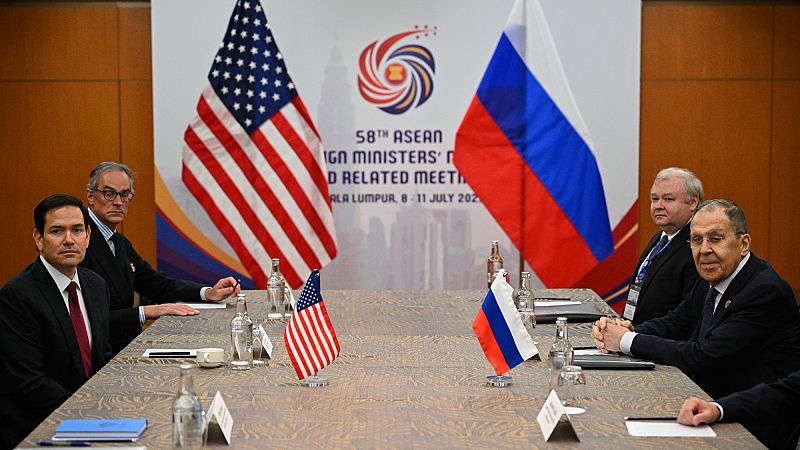US and Russia Explore New Approaches for Peace Talks Amid Ongoing Conflict in Ukraine
US Secretary of State Marco Rubio has revealed that the United States and Russia have engaged in discussions about new ideas for peace talks regarding Moscow’s ongoing war in Ukraine. This comes after a meeting with Russian Foreign Minister Sergey Lavrov in Kuala Lumpur, where both sides expressed frustration over the lack of progress but remained open to alternative strategies.
During the 50-minute meeting, which took place on the sidelines of the annual Association of Southeast Asian Nations (ASEAN) forum, Rubio emphasized the need for a clear roadmap to end the conflict. He noted that while there is disappointment and frustration, the two countries are exploring a “new and different approach” to negotiations with the Kremlin.
“I wouldn’t characterise it as something that guarantees peace, but it’s a concept that I’ll take back to the president,” Rubio said. However, he did not provide specific details about the proposals discussed.
This meeting marks the second encounter between Rubio and Lavrov since the former took office, although they have had several phone conversations in the past. Their first meeting occurred in February in Riyadh, Saudi Arabia, as part of the Trump administration’s efforts to gauge the willingness of both Russia and Ukraine to pursue peace.
The discussions came shortly after the US resumed shipments of defensive weapons to Ukraine, following a pause intended for the Pentagon to review domestic munitions stocks. This move was welcomed by Moscow, even as Russia continues its escalating aerial attacks on Ukrainian territory.
Rubio also highlighted the importance of maintaining US involvement in the region, particularly in light of growing tensions in the Indo-Pacific. He stressed that the region remains a central focus of US foreign policy, stating that the story of the next 50 years will largely be shaped by developments in this area.
Diplomatic Efforts and Trade Tensions
In addition to the talks with Lavrov, Rubio met with other foreign ministers, including those from ASEAN nations. Many of these countries face potential US tariffs set to take effect on 1 August. The Trump administration has warned several countries that they may face higher tariffs if they do not reach trade agreements with the US.
Among the affected nations are eight of ASEAN’s 10 member states. While US State Department officials have stated that trade and tariffs will not be the primary focus of the meetings, the issue remains a significant concern for many of Washington’s allies and partners in Asia.
Rubio addressed these concerns during group talks with ASEAN foreign ministers, emphasizing the importance of maritime safety and security in the South China Sea. This region has seen increased tensions, particularly with China’s growing assertiveness toward smaller neighboring countries.
Despite the emphasis on regional security, the tariff issue is likely to remain a topic of discussion. Countries such as Japan, South Korea, and most ASEAN members could face 25% tariffs if no deals are reached. This has raised concerns among regional leaders about the impact on global trade and economic stability.
Regional Trade and Economic Cooperation
Earlier on Thursday, Rubio met with Malaysia’s Prime Minister Anwar Ibrahim, who has voiced concerns about the weaponization of global trade. Anwar urged ASEAN to strengthen regional trade and reduce dependence on external powers, highlighting the need for greater economic resilience.
The discussions underscore the complex interplay between diplomacy, trade, and security in the Indo-Pacific region. As the US seeks to reinforce its alliances and address emerging challenges, the role of ASEAN and its member states remains crucial in shaping the future of regional cooperation.
With ongoing conflicts in Ukraine and rising tensions in the South China Sea, the international community continues to look for pathways toward stability and peaceful resolution. The recent engagements between the US and Russia, along with broader diplomatic efforts, reflect the ongoing commitment to finding solutions amid complex geopolitical dynamics.






